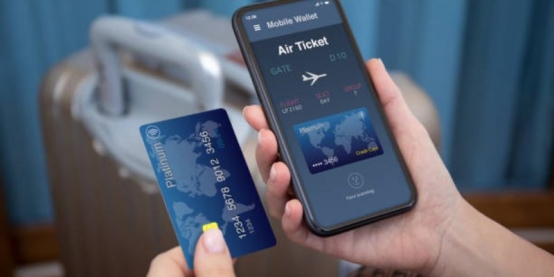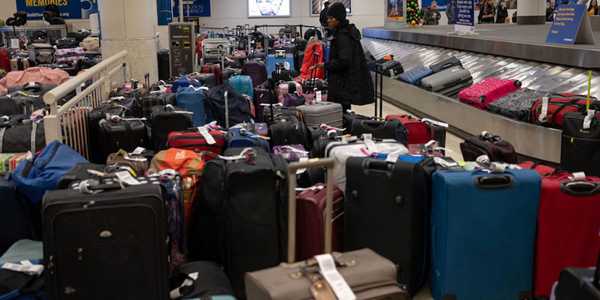The Best Time to Book Flights for Maximum Savings (Backed by Real Data)
Airfare prices can feel like a guessing game — one moment cheap, the next triple the cost. But timing isn’t random. Airlines follow predictable patterns that smart travelers can use to save hundreds.
This guide breaks down when to book flights — by day, month, and destination — using data-backed strategies that actually work.
Why Flight Prices Keep Changing
Airlines constantly adjust ticket prices through a system called dynamic pricing. Fares shift based on demand, search activity, season, and even competition on the same route.

The algorithm factors in everything — how early you search, how many people are looking at the same flight, and how full the plane already is. That’s why prices can rise within hours or drop suddenly after midnight.
Other key influences include holidays, weekends, and fuel prices. Understanding these patterns is the first step to finding the true lowest fare.
When Is the Best Time to Book Domestic Flights
Timing matters most for local trips. Booking too early or too late can cost you more than expected.
The Ideal Booking Window
For most domestic routes, the best time to buy tickets is 1 to 3 months before departure. At this stage, airlines start releasing lower “fare buckets” to fill seats — before last-minute demand pushes prices back up.
Booking under two weeks before departure often triggers surge pricing since airlines know travelers are desperate.
Best Days of the Week to Book
Industry studies from Google Flights and Expedia show that Tuesday and Wednesday consistently offer cheaper fares than weekends. Midweek booking works because fewer business and leisure travelers are searching, giving you a smaller demand window and lower average rates.
Seasonal Insights
Prices spike during school breaks, public holidays, and long weekends. The cheapest periods to fly are during “shoulder seasons” — early spring and late fall — when demand is low but weather is still pleasant.
When Is the Best Time to Book International Flights
For long-distance travel, timing gets even more crucial. Airlines release international fares much earlier, and prices fluctuate across regions.
Advance Booking Timeline
The sweet spot for international travel is generally 3 to 8 months before departure. For example:
Europe or Asia: 4–7 months ahead.
North America or South America: 3–6 months ahead.
Africa or the Middle East: 6–8 months ahead.
Buying earlier can help avoid the sharp increases that appear 60 days before departure.
Monthly and Seasonal Trends
Flights departing in February, March, or October often cost less because they fall between peak vacation periods. Midweek flights, especially on Tuesdays or Wednesdays, can also reduce costs significantly.
Currency and Market Factors
Exchange rates and fuel prices play a big role in international fares. When the dollar strengthens, overseas flights may become cheaper — especially on global routes dominated by competitive carriers.
How Far in Advance Should You Book by Destination Type
Different flight lengths follow different pricing patterns.
Short-Haul Flights
Domestic or nearby regional flights are cheapest about 6 to 10 weeks before travel. Booking too early can lead to overpaying because airlines haven’t opened all discount fare classes yet.

Long-Haul Flights
For trips over six hours, prices are lowest about 4 to 6 months out. Booking later often means fewer available seats at the cheapest levels.
Popular Vacation Routes
Well-traveled routes like New York–Miami or Los Angeles–Hawaii fill up fast. Book at least 10–12 weeks in advance for major vacation spots, especially during summer and winter holidays.
Best Time of Day and Week to Book Flights
Many travelers wonder if the time of day matters — and yes, it can.
Time of Day
Airline systems often reset their fares late at night. Searching between midnight and 5 a.m. in the airline’s local timezone may reveal unclaimed promotional fares. Early morning or late-night searches tend to avoid the high-traffic hours that raise demand.
Day of the Week
Tuesdays and Wednesdays are generally cheapest to book, while Tuesday, Wednesday, and Saturday are the cheapest days to fly. Weekends often trigger fare spikes as more travelers search and book.
Tools and Tricks to Track the Lowest Fares
Technology can save you hours of searching and hundreds of dollars.
Use Flight Tracking Tools
Websites like Skyscanner, Google Flights, and Hopper track fare changes and send alerts when prices drop. Set notifications for multiple destinations if you’re flexible.
Leverage Flexible Dates
Using “flexible date” search tools lets you compare prices a few days before or after your target date. A one-day shift could save $50–$200, depending on route and demand.
Clear Browser Data or Use Incognito Mode
While modern pricing is less influenced by cookies, searching incognito can still prevent cached data from slightly inflating prices. It’s not foolproof, but it helps maintain consistency across searches.
Timing Tips for Special Deals and Sales
Many airlines run predictable sales throughout the year — knowing when helps you plan.
Airline Sale Cycles
Major carriers often launch January and mid-year sales, plus limited offers during global travel events. Sign up for newsletters from your favourite airlines to catch these early.
Holiday and Off-Season Discounts
Black Friday, Cyber Monday, and New Year’s periods usually feature strong flight discounts. The key is booking early during the promotion window — the cheapest seats disappear within hours.
Loyalty Programs and Fare Alerts
Frequent flyer memberships can unlock early access to exclusive deals and promotional fares. Even free membership tiers often include alert systems for sudden price drops.

Common Myths About Flight Booking Timing
A lot of online booking “advice” online is outdated or misleading.
“Last-Minute Deals Are Always Cheaper”
While unsold seats can drop last minute, this rarely happens on busy routes. Most travelers end up paying more, not less.
“Prices Drop on Specific Days Only”
There’s no universal magic day. While midweek trends hold for many routes, prices vary depending on region, season, and airline strategy.
“Clearing Cookies Always Works”
Modern pricing algorithms rely more on global demand data than browser cookies. Clearing them doesn’t guarantee savings — it just avoids inconsistent results between searches.
Smart Booking Strategies for Maximum Savings
Bringing it all together, these habits maximize your chances of landing the best price.
Combine Timing With Flexibility
Be open to adjusting your travel days or even your departure airport. A two-hour difference can sometimes cut your fare in half.
Monitor Prices Over Time
Track a few flight options for two to three weeks before buying. When you notice the first major price drop, that’s usually your book signal.
Use Refundable Fares or Fare Lock Options
Some airlines let you hold fares for 24 hours or longer at a small fee. It’s worth it if you’re comparing multiple dates and don’t want prices to jump overnight.
Wrapping Up
There’s no single magic date for cheap tickets — but data shows clear patterns. For domestic travel, aim to book 1–3 months ahead, ideally midweek. For international trips, secure tickets 3–8 months before departure.
Flexibility, monitoring, and smart use of tools like Google Flights and Skyscanner make the biggest difference. When you plan strategically, saving on flights becomes a habit — not a lucky break.
Sources:
- Learned practical methods
- Solved my questions
- Inspired new ideas










